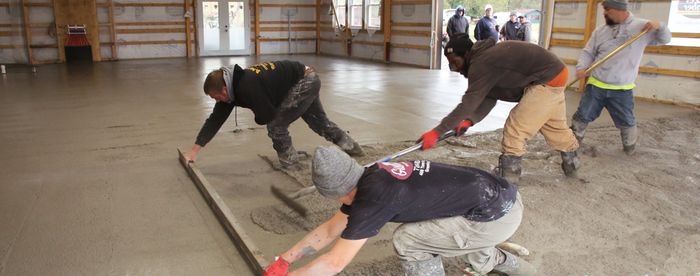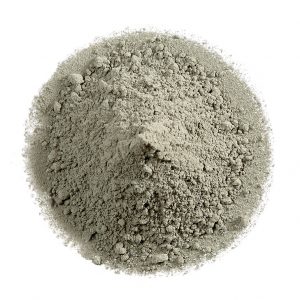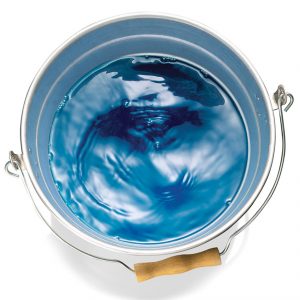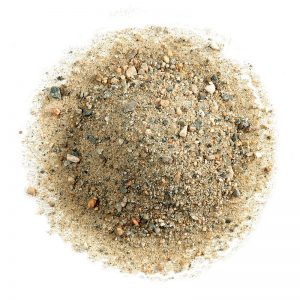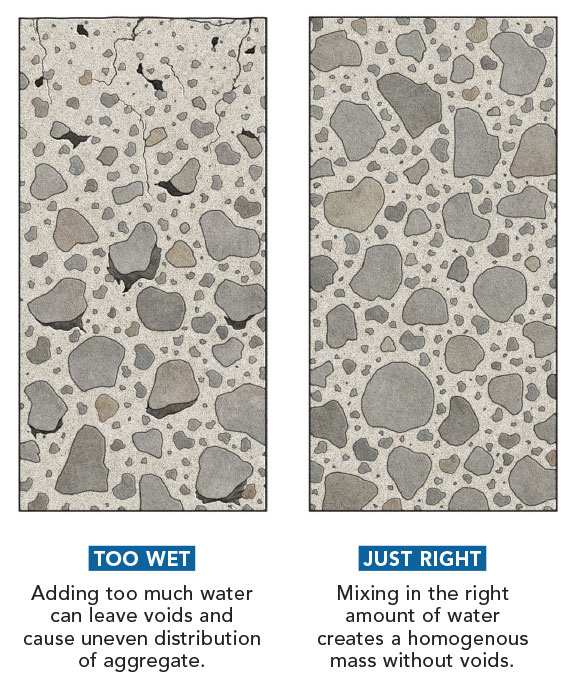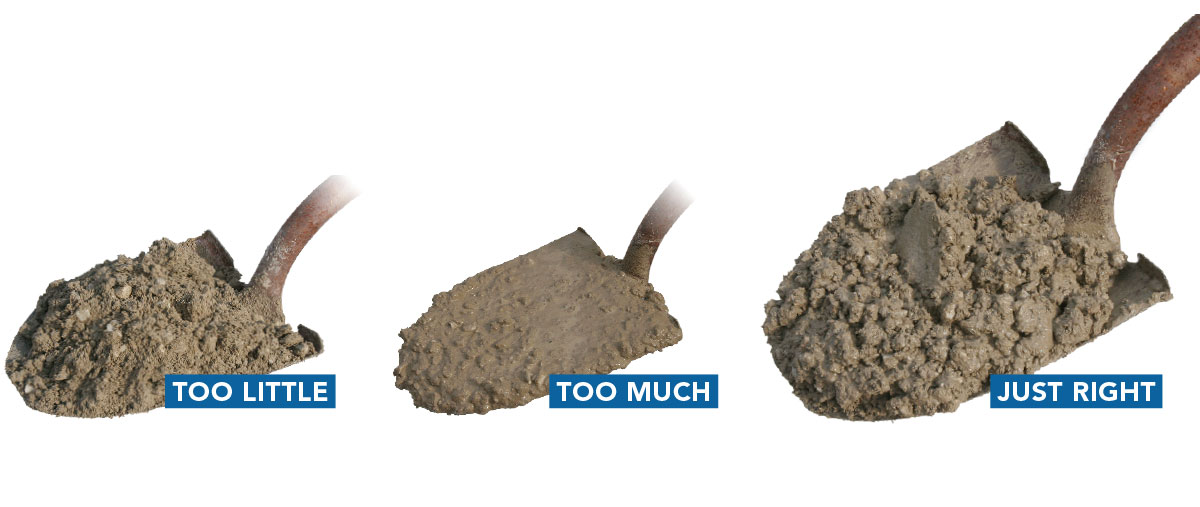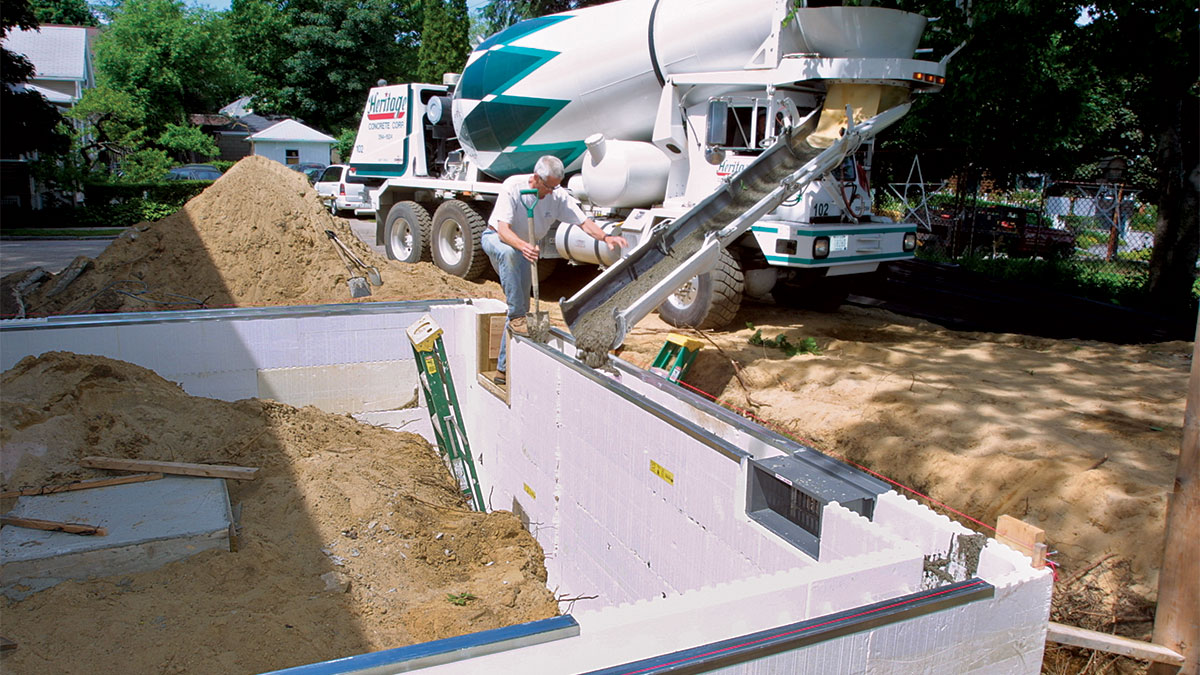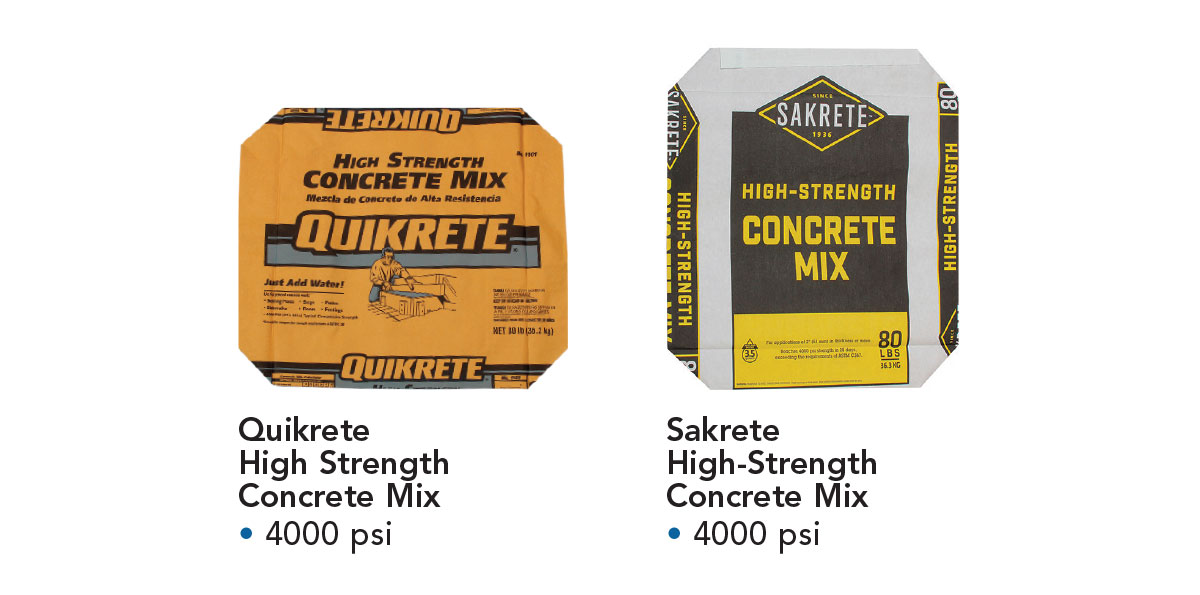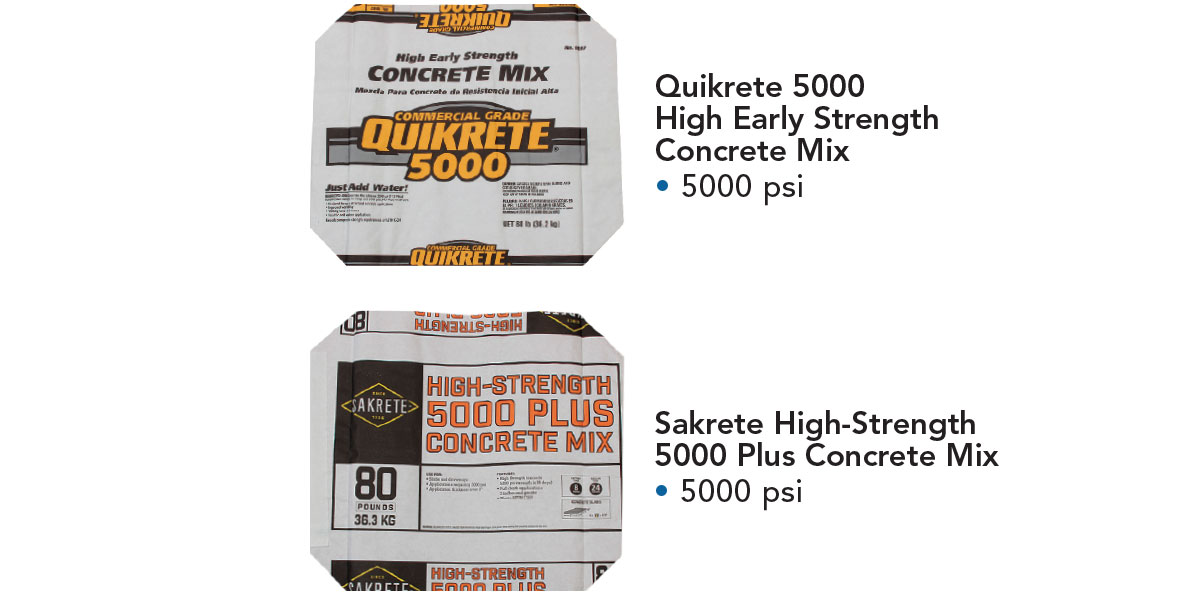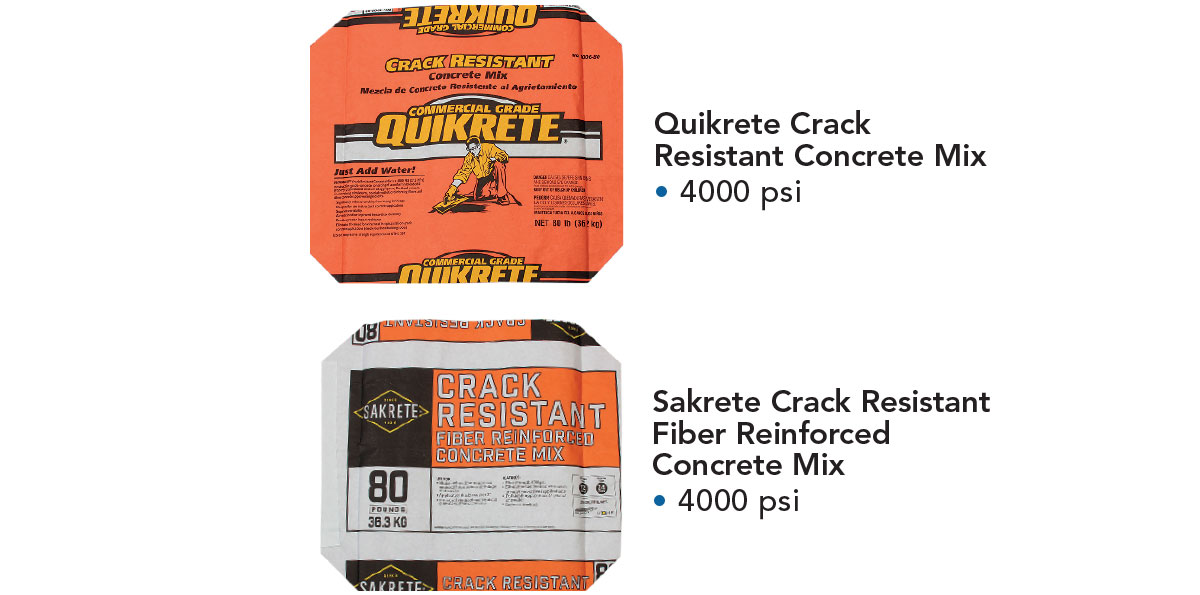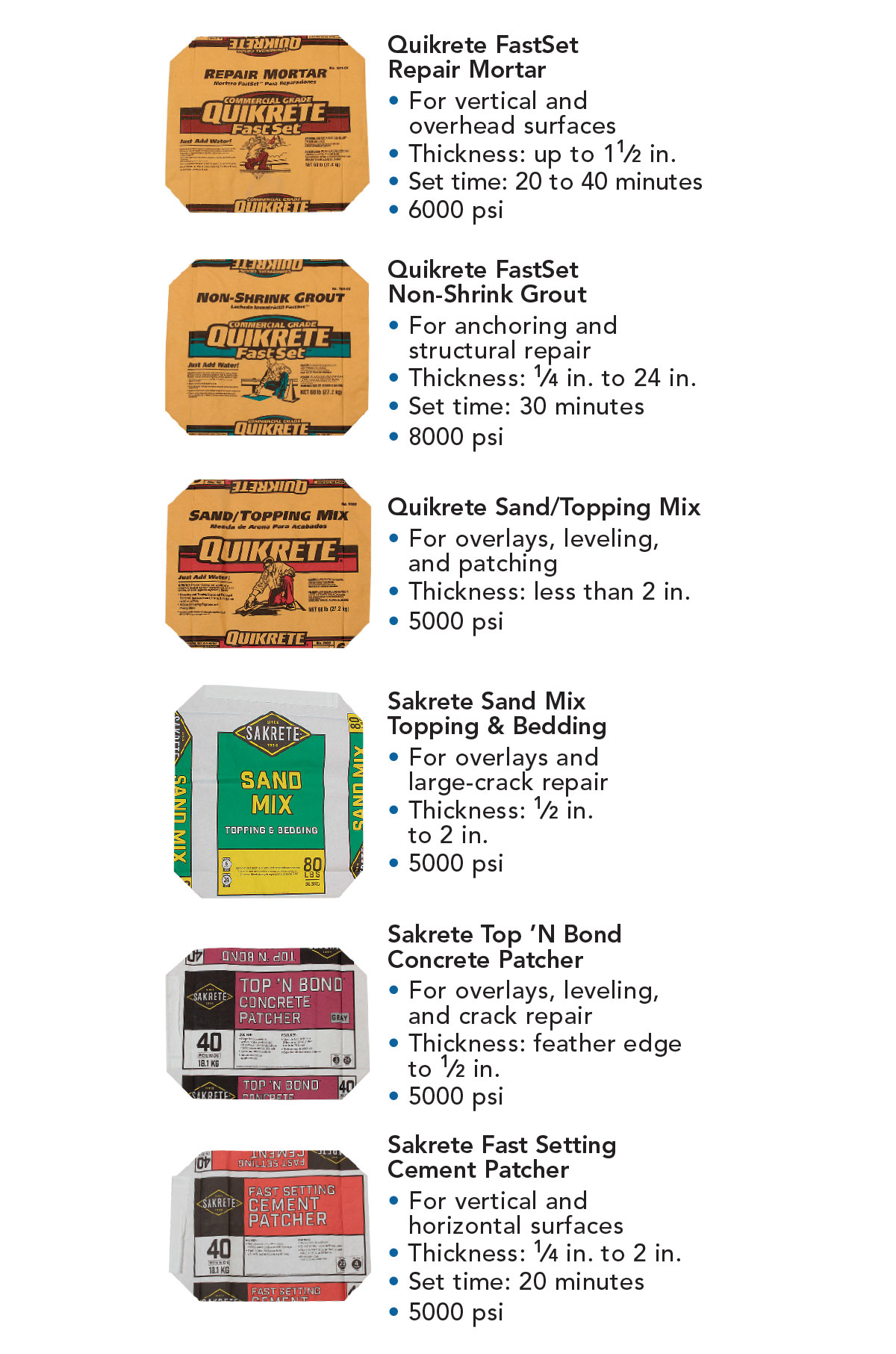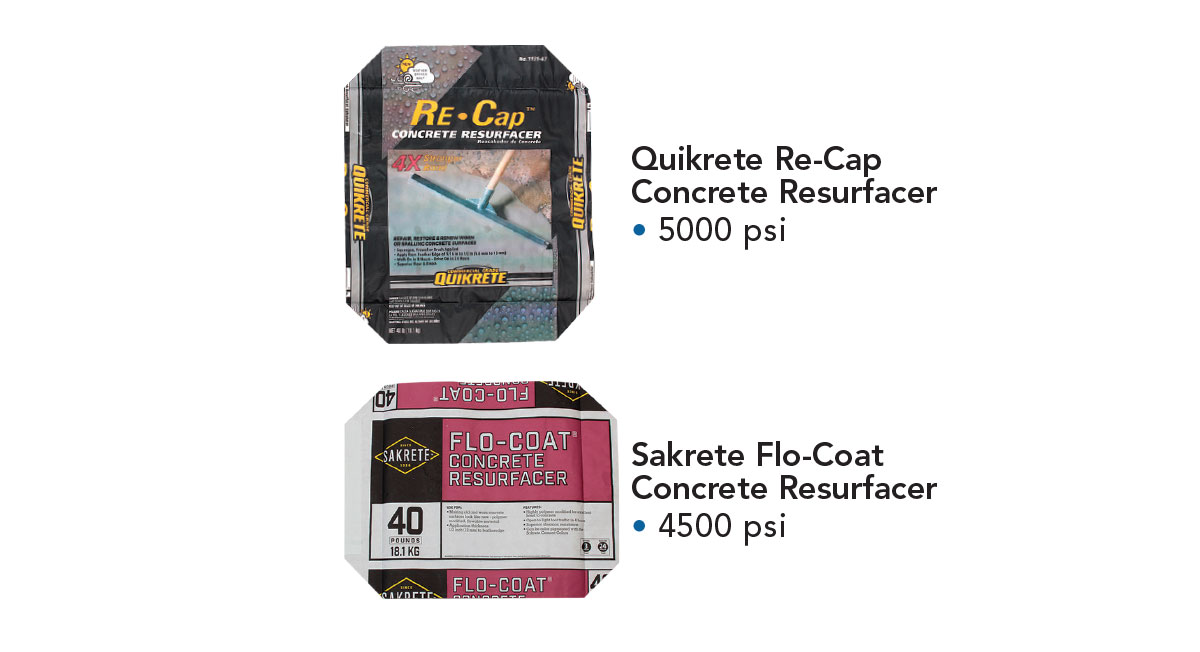Choosing the Right Bagged Concrete Mix
Learn how to choose the best concrete mix for your small masonry projects from dozens of specialized pre-packaged options.
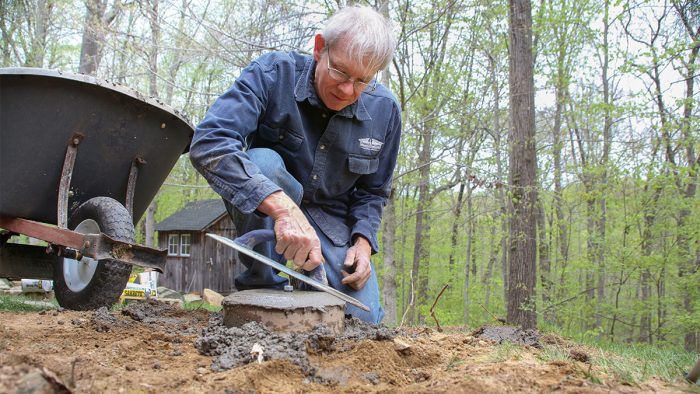
Synopsis: Carpenter Andy Engel loves concrete. In this article, he outlines the basics of ready-mix concrete bags, including the three-part formula, the key to achieving the appropriate hydration, the conditions for specific product choices, and the best options for slabs, foundations, footings, and repairs. The article includes a rundown of brand-name ready-mix options for everything from formwork to resurfacing.
Three-part formulaConcrete is composed of three main ingredients: Portland cement, water, and aggregate (both fine and coarse). The proportioning of those ingredients is the main factor that determines the concrete’s strength, durability, workability, and cost. Cement Cement is the glue in a concrete mix. Combined with water, it forms a paste that coats the aggregate and binds together the mixture. Water Water is what sets off the chemical reaction that turns the dry components into concrete. Known as hydration, this reaction is what makes the cement turn back into rock. Aggregate Think of aggregate as bricks in a wall and cement as the mortar. Aggregate makes up most of the structure in concrete, adding strength and reducing its cost. The individual stones in the coarse aggregate interlock, and the sand fills the voids. |
It may be a personality flaw, but I love concrete. I will take the snarl of a loaded ready-mix truck turning into the driveway over the whine of a 737 flying me away on vacation any day of the year. But as much as I relish the prospect of 20 tons of wet concrete being delivered for me to shape into a slab or a building footing, the fact is that most of my concrete work has been too small for a ready-mix order.
Consequently, I’ve mixed up a fair number of bags of concrete mix for deck footings, for stair landings, and to repair a variety of slab cuts and miscellaneous damage. It used to be that lumberyards and home centers would have three choices: concrete mix, sand mix, and mortar mix. Now they have at least three choices of concrete mix alone.
What’s changed? Like most things in our lives, technology has affected bagged concrete. Frank Owens, Quikrete’s VP of marketing, says, “Bagged concrete mixes today are designed for specific purposes.” This is largely down to the development of admixtures—natural or manufactured chemicals that improve certain properties of fresh or hardened concrete, such as work ability or strength. “All the components are carefully weighed and computer-batched. This allows admixes to be added correctly.” Which, in turn, allows for mixes aimed at specific purposes.
Stronger together
Concrete choice is largely about strength. While other additives are often used to achieve specific ends, all concrete contains five chief ingredients: coarse aggregate (gravel) and fine aggregate (sand), which compose 60% to 75% by volume of the mix; 7% to 15% Portland cement, 14% to 21% water, and up to 8% air. The ratios of these components affect strength and hardening time, as well as workability and longevity. The most expensive ingredient is the Portland cement, and it’s also the one that has the most obvious effects: The more Portland, the stronger the concrete and the faster it sets.
Concrete sets because of a chemical reaction between the Portland cement (there are other compounds that act similarly, but they’re outside the scope of this article) and water. That reaction takes time, and concrete’s ultimate strength is measured at 28 days. That said, the initial hardening of concrete depends on the temperature: The warmer the weather, the faster the reaction. The reaction is exothermic, meaning it gives off heat. That’s what keeps concrete from freezing when poured in below-freezing temperatures, though you can’t go too far below freezing without insulating the pour (bagged mixes typically include temperature recommendations). If the water in the mix freezes, the reaction stops, and the ice crystals wreak havoc on the structure of the weak, new concrete.
The strength of a concrete mix is determined by measuring the pressure required to crush a sampling of test cylinders cast from that mix and allowed to harden for 28 days. Obviously, each bag of concrete mix isn’t tested in this way, but samples have been evaluated. The minimum strength used in residential concrete work is a 2500-psi mix. All the bag mixes I know of are claimed to be at least 4000 psi, and some specialty mixes yield more than double that strength.
Conditions can affect product choice
The two most important conditions to consider when working with concrete are weather and time. These factors become especially notable when you’re pouring a slab, because the concrete has to set partially before it can be finished. In hot weather, concrete sets more quickly, and you want to be sure there’s time to finish placing the last of the mix before you have to finish the first sections that you placed. Conversely, in cold weather, a slow-setting mix can have you finishing a slab by headlight when you’d really like to be home having dinner.
I’m also including with conditions the speed with which the concrete needs to enter service. For slabs that will likely see traffic in a short period of time—sidewalks and driveways, mainly—it’s worthwhile to spring for high-early-strength concrete.
Finally, there’s budget. Concrete mixes containing more Portland cement and other additives will cost more per bag. In my area, standard concrete mix costs $4.90 for 80 lb., while the high-early-strength mix costs $6.80 for the same amount. There are times when you’ll want to spend the extra for it, but it’s not always worthwhile.
Stay hydrated, but not too hydrated
Cory Olson, Senior Vice President of Sakrete, says that, “Overwatering is a common error.” Theoretically, only enough water to fully react with the amount of Portland cement in concrete mix is needed. Any water added beyond this results in weaker concrete. That excess water expands the volume of the wet concrete, and some of it remains in place for a time after the concrete sets. But eventually the excess water will evaporate, leaving concrete that’s less dense and not as strong.
HydrationThe key to achieving the psi strength labeled on a bag of concrete is keeping the water-to-cement ratio as low as possible without sacrificing workability. Adding too much water can cause a host of problems. As wet concrete compacts, water—the least-dense component of the mix—gets displaced upward. If there’s a lot of excess water, it can create vertical channels and get trapped below the course aggregate as it rises, creating voids. |
However, adding only the chemically necessary amount of water yields a mix that’s too stiff to mix and work by hand. More water is almost always needed to create a workable mix. That said, modern bagged concrete mixes usually contain some form of plasticizer, a chemical that makes the mix more workable with less water. The directions on the bag will tell you how much water to use. Start there, and only add more water if absolutely necessary. If you find you still need to add water, Olson suggests using a high-strength mix where some loss of strength may be acceptable.
Additionally, adding too much water can create a workability problem, particularly in slabs. As the concrete sets, much of the excess water makes its way to the surface, and you can’t finish the concrete until that water goes away. That can be a particular problem in hot, humid weather, because the underlying concrete can become too hard to work before the surface water evaporates. In these conditions, I have literally mopped water off the top of a slab with my wife’s ShamWow. (Yes, we’re still married.)
All of that said, it’s important to keep concrete wet as it sets. Concrete should be kept wet for 5 to 7 days after it’s poured. Common approaches are to cover the concrete with plastic and flood the space between or cover it with burlap and keep that wet. This isn’t done very often in residential work, but keeping freshly finished concrete wet for the first week makes a difference in its long-term strength.
Wet enough to workSave for water, bagged mixes come with just the right amount of each ingredient carefully proportioned. But you can still mess it up by adding too little or too much water. Don’t just pull out the garden hose and spray and pray to get it right. Use a graduated measuring container to portion out the amount of water the manufacturer recommends on the bag. |
Concrete for footings
Silica safetyRespirable silica has become the construction safety The National Institute for Occupational Safety and Health (NIOSH) recommends (and OSHA requires) the use of respirators with N-95 particle filters when working around silica dust. 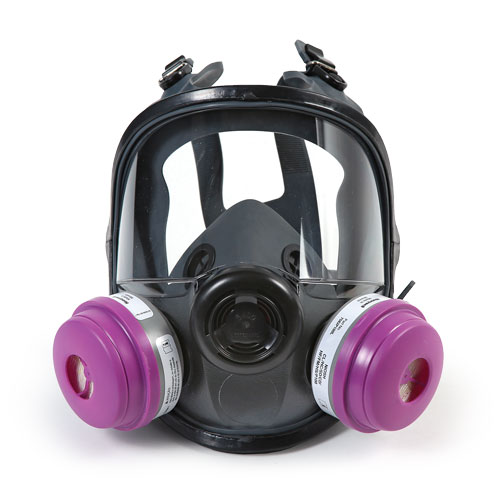 |
In most cases, you can use regular, garden-variety concrete mix for footings. It’s least expensive, and there aren’t usually special finishing requirements. And even in below-freezing weather, the surrounding ground is usually warm enough to allow the concrete to set with just some hay or straw to insulate the very top.
There are two exceptions. If you want to, say, build a deck on the footing in the next day, it’s worth your while to spring for high-early-strength concrete. And if the footings are just posts in the ground that get backfilled with concrete, such as for fences or pole barns, some fast-setting mixes are an attractive option, because they can be dumped into a water-filled hole around the braced post, and the post will be secure within half an hour.
Concrete for slabs
In most cases, standard concrete mix works fine for slabs, but in cold weather it’s worth using a high-early-strength mix because it sets faster. Conversely, high-early-strength mixes can set too fast for proper finishing in hot weather. However, these mixes do allow the slab to be placed in service more quickly. That can be useful for sidewalks, driveways, and even air-conditioner slabs if you’re in a hurry.
I don’t recommend a fast-setting mixture for any but the smallest slabs—the setting time of 15 to 45 minutes doesn’t provide anywhere near enough time to finish the surface of the concrete.
Another option for slabs is crack-resistant mixes. These contain fibers that help prevent surface cracking, which is more visible in smooth, steel-troweled finishes than in broom-finished work. Keep in mind that these fibers are not a substitute for steel mesh or rebar when greater structural strength is required.
Air-entrained concrete was once something you could only get from a ready-mix truck. The purpose of air entrainment is to make concrete less susceptible to damage from freeze-thaw cycles, and it’s a useful amendment to outdoor concrete slabs in cold climates. Air entrainment requires special additives, and used to also require several minutes of mixing with the drum of the truck spinning at a high rpm to fold in a bunch of air bubbles. Today, there are air-entraining additives available in bag mixes that don’t require the high-speed spin-cycle of a concrete truck, and which work with regular hand-mixing.
Concrete for repairs
Products for use in repairs often have to work in thinner applications than standard concrete mixes (most standard mixes require a depth of at least 2 in.). Typically, you’ll want a product that sets quickly so the area can be used as soon as possible, and you’ll want to work a small enough area that you’re able to finish the concrete before it sets.
When you have at least 2 in. of depth, fast-setting concrete mix is a good choice. Non-shrink grout is a better choice in situations where the edges of the repair need to feather into an existing surface. Non-shrink grout can also be applied using a grout bag to fill cracks, and its high compressive strength (up to 8000 psi) makes it a good choice for structural repairs. Cracks that are caused by
ongoing concrete movement are best repaired with flexible products, such as Watco Concrex Flex.
There are also polymer-modified mixes that are particularly sticky, and these are useful for overhead and vertical repairs. Finally, for slabs that have pitted and spalled over time, resurfacing mixes are available that are poured onto the slab and squeegeed flat.
It’s in the bagThe name on a bag mix may not tell the whole story. Here’s a quick breakdown to help guide your selection. Everyday concrete Mixes are highly versatile and inexpensive, good for everything from slabs and footings to walkways and stairs. Minimum thickness is 2 in. High-early-strength Mixes are good for footings, but particularly useful for slabs that need to be placed in service quickly, and for cold-weather placement. Minimum thickness is 2 in. Crack-resistant Mixes contain fibers to increase tensile strength and reduce (but not eliminate) the need for steel reinforcement. Minimum thickness is 2 in. Fast-setting mixes are great for setting posts in the ground. There’s no need to premix; just add water to the hole, followed by the concrete mix—or vice versa depending on instructions. Minimum thickness is 2 in. Fast-setting structural mixes work well for small patches in high-traffic areas. With a setting time of about half an hour, they aren’t for larger pours. Minimum thickness is 1-1⁄2 in. Air-entraining mixes use an admixture to incorporate tiny air bubbles, increasing freeze-thaw resistance. Minimum thickness is 1-1⁄2 in. Repair mixes are for patching existing concrete and can often be feathered out to a thin edge. Some are fast-setting, while some are stickier and work well on vertical surfaces. Resurfacing mixes are meant to fill and level pitted and spalled slabs. They’re mixed to a thin consistency and spread with a squeegee to a thickness of 1 ⁄ 2 in. to a feather edge. |
—Andy Engel is a lead carpenter with HVP Corp. in Kent, Conn. 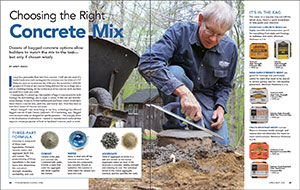
Photos by Melinda Sonido, except where noted.
To view the entire article, please click the View PDF button below.
From Fine Homebuilding #290
More about concrete:
Choosing the Right Hand Float for Your Next Concrete Project – Wood, resin, magnesium, and aluminum versions of this essential masonry tool all have their pros and cons.
How to Safely Pour Concrete Against Siding – Find out what type of flashing you can install between new concrete steps & existing siding or sheathing to prevent rot & other water damage.
How to Pour Concrete on a Slope – The best way is to order low-slump concrete, which is concrete with a low proportion of water.
